How do we identify species from their wings?
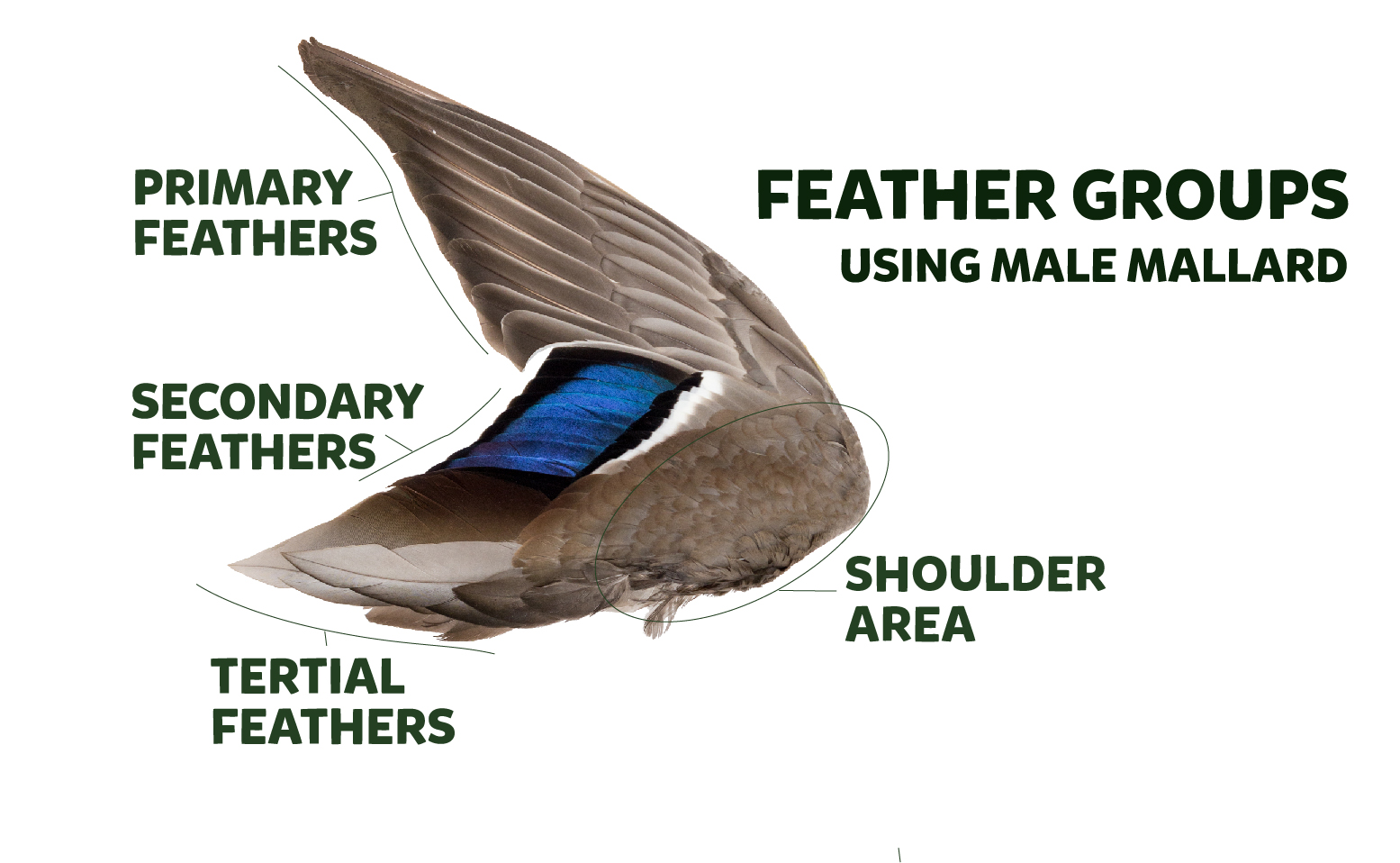
But first, click on the image to the right to learn the different feather groupings of a wing that are key to identifying duck species! This graphic is helpful when distinguishing between species as shown in the various videos on this page. See further down on this page for other videos in the series about duck species identification using wings.
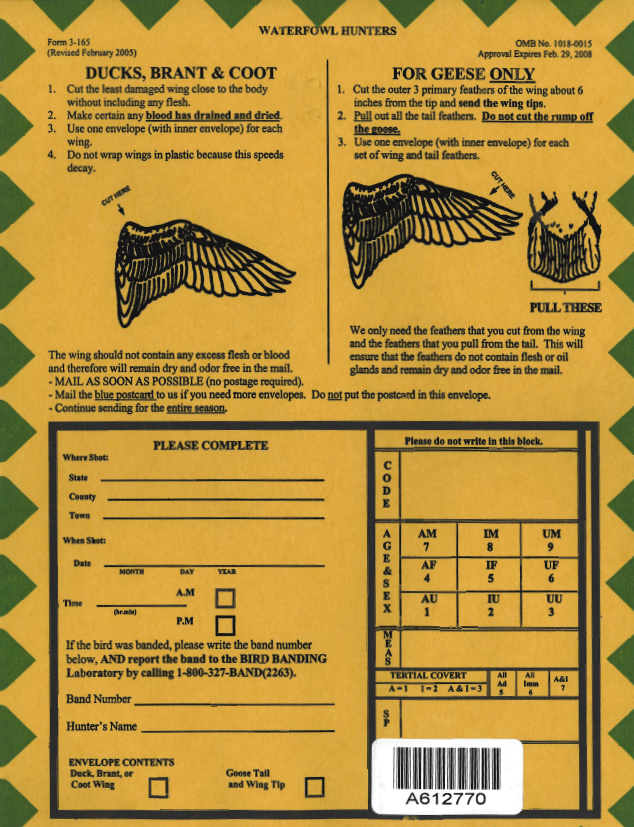
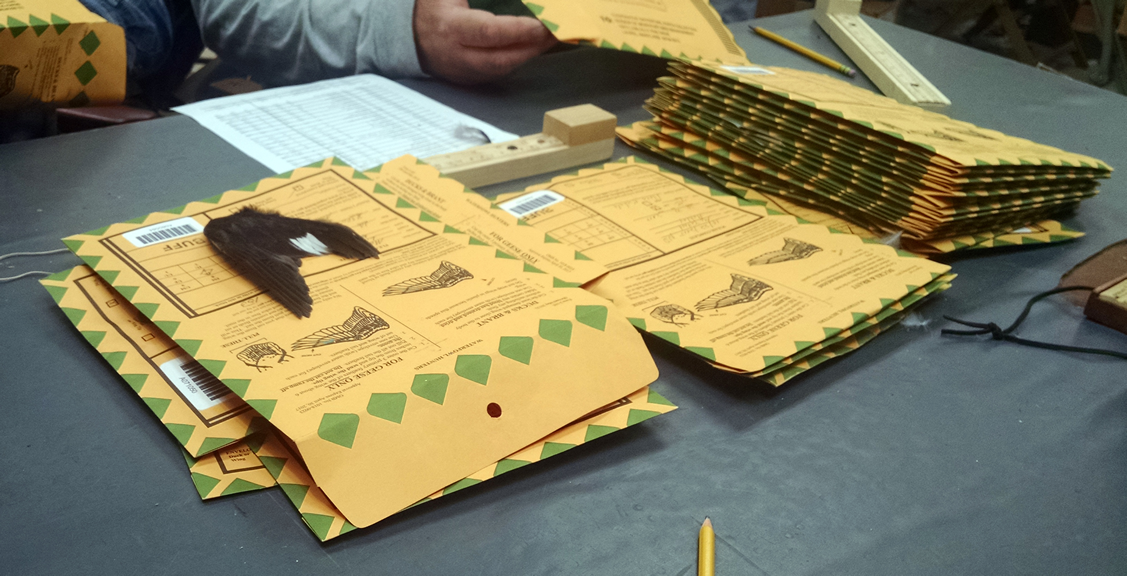
The Waterfowl Parts Collection Survey randomly selects 5-6,000 waterfowl hunters to send us a wing from every duck, and tail feathers from every goose, they shoot during the hunting season. This survey tells us the species composition of each state's duck and goose harvests. The image to the left shows the postage-paid envelope the selected waterfowl hunters send us for every individual bird they shoot during the hunting season. Once we receive the envelopes, biologists and volunteers gather together and sort through the wings and feathers to identify the species. The image above and to the right shows a stack of received envelopes and a duck wing ready for identification.
We combine Parts information with the estimates of harvest from the Diary Survey to get estimates of how many birds of each species were harvested. We can also identify the sex of a duck from its wing, and whether it was a young-of-the-year bird or an adult. The ratio of young-of-the-year birds to adults gives a good measure of the production of each species compared to previous years. That, in turn, helps biologists keep track of how waterfowl populations are faring. The USFWS also measures annual production of dove, woodcock, and band-tailed pigeons with Parts Collection Surveys.
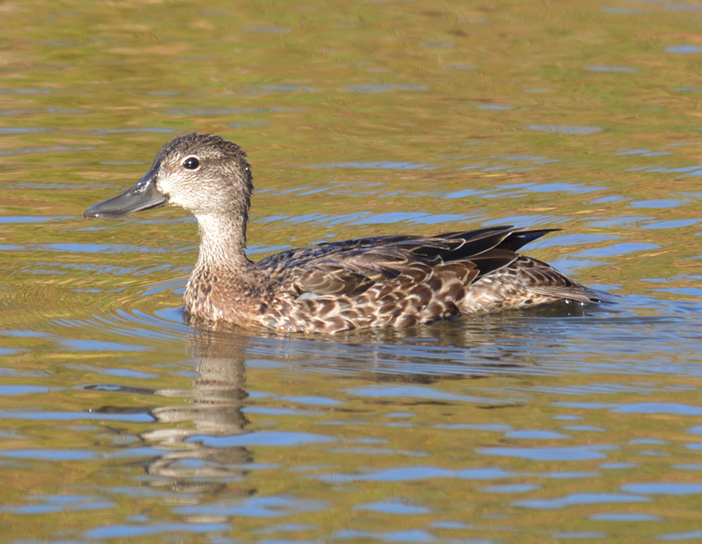
Duck wing identification can be a handy skill when you're having a good day in the duck blind, since you're only allowed to shoot one or two of some species. Male ducks are usually (but not always) easy to identify, but young-of-the-year females of several species are pretty drab "brown ducks" and look similar.
What is the duck on the right? Click the binoculars to find out the answer!
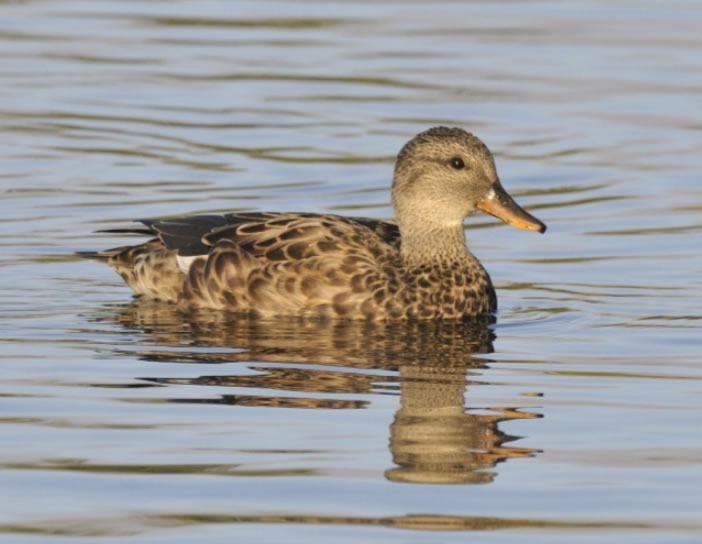
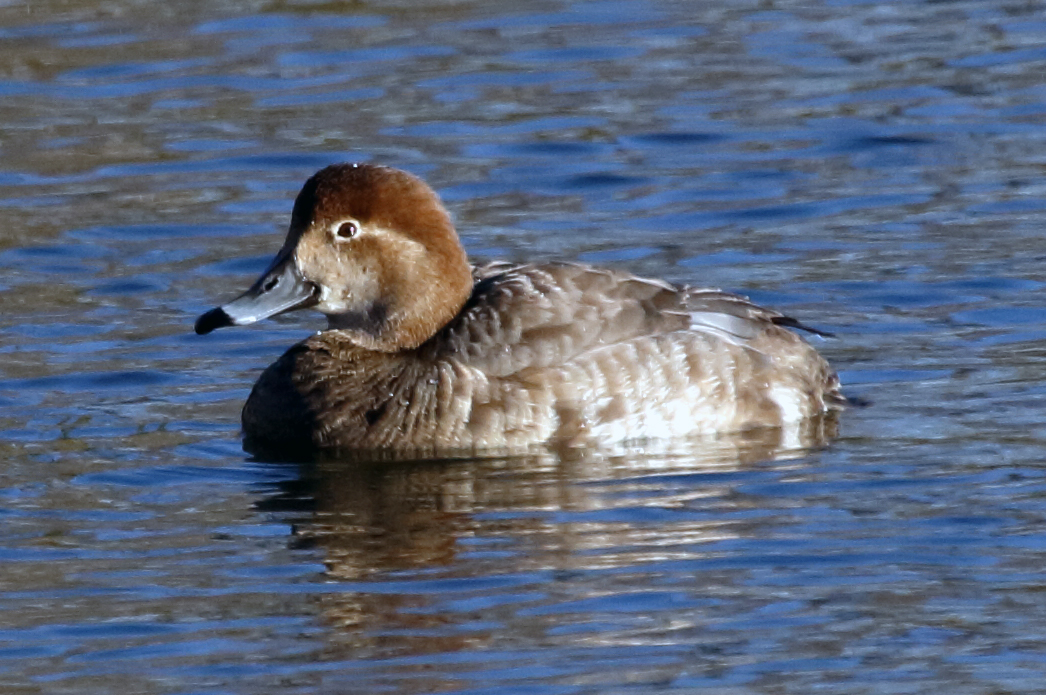
The duck to the left is another female; do you know what species? To differentiate between similarly colored Redheads and Canvasbacks, we use not only the wing, but also the shape of the head and bill.
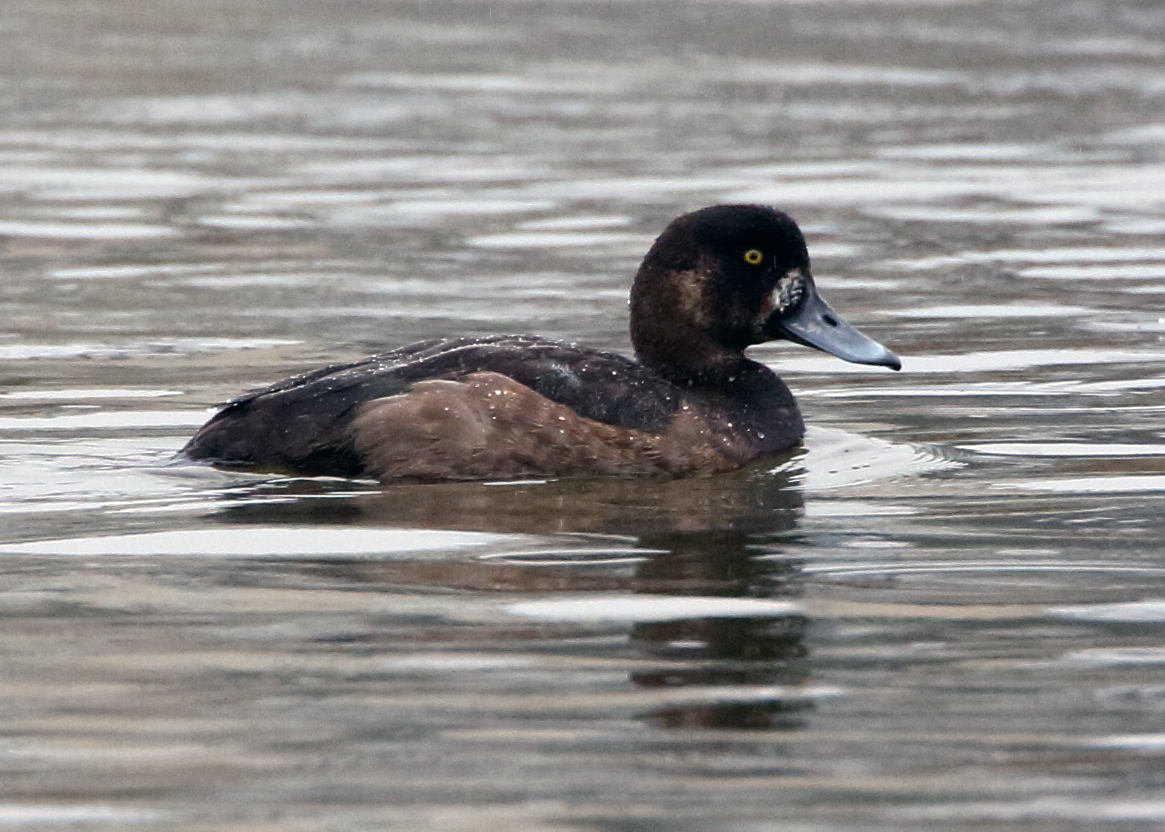
Click here to see maps showing waterfowl harvest in through the U.S.
This content was developed through a collaboration between staff from the USFWS Migratory Bird Program and USGS Patuxent Wildlife Research Center. The project was kicked off at an internal 2017 National Civic Day of Hacking event held at PWRC. Participants included Tony Bethea, Theo Burton, Tony Celis-Murillo, Chris Deets, Rob Fowler, Pam Garrettson, Kayt Jonsson, Jenn Malpass, Derek Masaki, Paul Padding, Bob Raftovich, Becky Rau, Emily Silverman, Alli Sussman, Khristi Wilkins, and Nathan Zimpfer.
Last Updated: September 24, 2018.